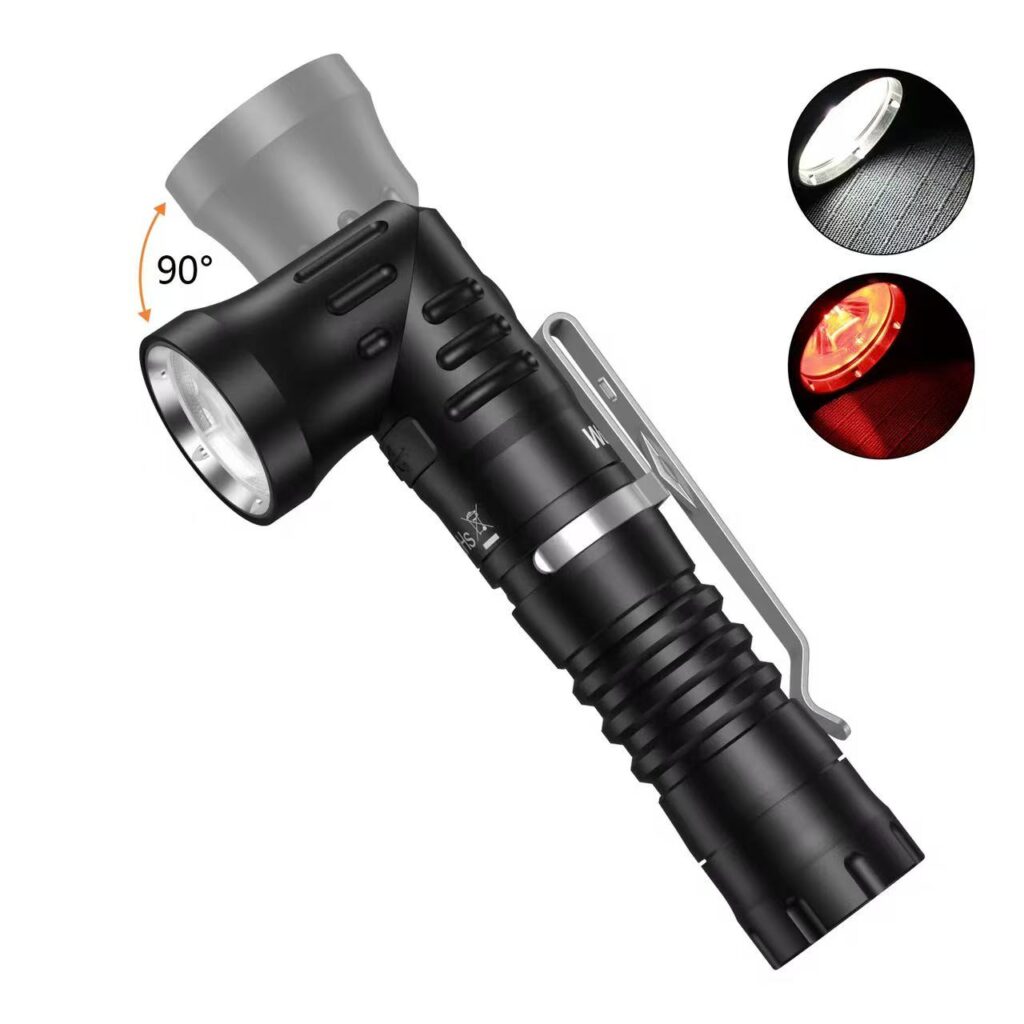In the category of lighting tools, LED high-intensity flashlights occupy an important position due to their unique advantages. This type of flashlight uses light-emitting diodes as the light source and features significant characteristics such as environmental friendliness, energy efficiency, and a long service life. With a robust structure, it is widely used in outdoor lighting scenarios and can remain intact even if accidentally dropped. However, despite its excellent durability, minor malfunctions may still occur after long-term use. When an LED high-intensity flashlight suddenly fails to light up, how can we accurately identify the problem and carry out repairs? The following will detail its maintenance and repair methods to facilitate quick troubleshooting.
I. Accurately Locating the Cause of the Fault
Inspection of the Switch and Circuit Connections
First, unscrew the tail of the high-intensity flashlight to expose the negative pole of the battery. Then, use metal objects such as scissors or tweezers to connect the negative pole of the battery to the exposed and non-oxidized part of the flashlight body near the battery, and observe if it lights up. If there is light but the flashlight as a whole does not work, it indicates that the fault lies in the switch, which requires further inspection. If there is still no light, it is necessary to check the soldering at the connection between the circuit compartment and the circuit board to see if there is any desoldering or cold soldering. Once such problems are found, re-soldering will restore the flashlight to normal.
Inspection of Battery Status
This step is crucial. It is necessary to first ensure that the battery is fully charged and that the positive and negative poles are correctly oriented during installation. Special attention should be paid to the strict prohibition of using batteries of different models, and mixing batteries of different ages is also not allowed, otherwise, various abnormalities may occur.
Inspection of Threaded Connections
Before maintenance, it is essential to check whether all threaded connections of the flashlight are tightened and free of looseness. Loose threads may cause the flashlight to not light up or have weak brightness, and this detail cannot be ignored.
II. Daily Maintenance Points
Battery Maintenance
If the high-intensity flashlight is not used for a long time, it is recommended to charge it once every 3 months to protect the battery and extend the service life of the flashlight. After the battery is fully charged, it is advisable to use the second gear for lighting first, which can effectively prolong the service life of the lamp head and the battery.
Heat Dissipation Management
During use, holding the flashlight tightly with hands helps in heat dissipation. If it needs to be turned on for a long time, it should be cooled in time or turned off according to the heating condition of the flashlight, and then turned on again after the temperature drops to ensure good heat dissipation.
Environmental Protection
Strictly follow the waterproof and shockproof instructions of the flashlight and enhance the awareness of protection.
Safety Tips
It is strictly forbidden to direct the light of the high-intensity flashlight at human eyes. Its strong light is highly irritating and may damage eyesight, especially for children, who should be prevented from looking directly at it. If the flashlight is not used for a long time (one month or more), the battery should be taken out to prevent chemical corrosion.
Mastering the above maintenance and repair knowledge can effectively extend the service life of the high-intensity flashlight and enable it to play a greater role in daily life.

